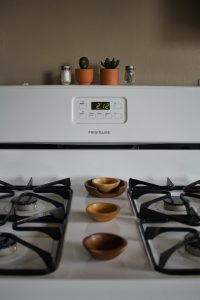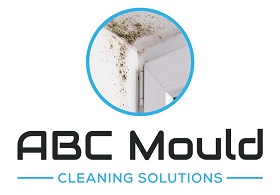What Damages Can Mould Cause To Your Home?

Mould damage at home – If you have recently become a homeowner, it is a fantastic idea to get accustomed to the consequences of mould. Every home buyer expects that mould won’t ever be a problem for them.
However, the reality is that over half of the homes in Australia will deal with mould issues at the same time or another. Obviously, mould causes structural damage to your house and to your wellbeing.
With each the possible damage that moulds can perform, it is important to realize how to block it from entering your house. In this guide, we clarify what mould is, how it creates, and exactly what you need to do if you locate structural damage in your house.
Other Mould Classifications

There are in fact hundreds of different types of mould that develop both inside and outside. The majority of us are subjected to a kind of mould daily. However, the mould that grows in moist or poorly lit areas is not ever a fantastic sign. A mould is a form of fungus that latches to substances like timber, materials, cardboard, or paper and thrives in areas which have a good deal of moisture rather than a great deal of sunlight. Mould will feed on those organic materials and consume away at them when left untreated. If mould develops on other materials like metal, glass, or concrete, then it’s going to have little impact on those surfaces.
Now you have some notion about what mould really is and the way it develops. You can probably imagine how mould causes structural damage to houses.
Mould can completely ruin things such as rugs, furniture, shelving, and other removable materials. When located in regions which may be transferred, it is important to replace these things whenever possible. Mould causes structural damage to houses when it is not correctly addressed after spotting it to the very first time.
In addition, it can be utilized in heating and ac systems. Mould located in these regions may influence your air quality and cause many respiratory troubles. It is important to not forget to wash air filters and ducts regularly. Mould may also seep into ceilings, walls, floorboards, or tiles also can totally destroy the base of a house.
Fixing Mold Damage
Mould causes structural damage, acute health difficulties, and generates poor air quality. Due to the intense destruction and threat of mould, repairs will need to occur sooner rather than later. Eliminating mould does not have to be difficult or very hard to perform, it is all dependent on the construction and just how much the mould has spread.
One reason which makes it hard to fix mould yourself with no professional assistance is the simple fact that mould can disperse throughout the elimination procedure.
You might believe that you’re getting to the root of the difficulty once the mould is really being accidentally expanded into different areas of your house.
For instance, let’s say you discovered mould growing on a wooden shelf at a badly lit area. The moment the mould falls to the carpeting, it is going to attach and grow.
If mould is caught early enough, you might be able to wash and fix it with no additional troubles. If the mould has burst, it may be near impossible to fix without specialist assistance. As mentioned previously, there are particular surfaces which are easier to fix and clean.
What Can You Do?

Besides observable mould, other indications of damp problems may include mould odour, water stains, regular condensation, stained or cracked paint or wallpaper, moist cellar, and standing water around the home.
No secure levels of indoor dampness or mould have been characterized. So health-based criteria or guidelines don’t exist.
Still, there are numerous precautionary measures you can take to prevent or minimise indoor mould. Included in these are satisfactorily heated and, in colder climates, insulating your house to decrease air humidity moisture and levels
Install and utilize proper ventilation, especially in moist areas or areas where water vapour might be straightened, like bathrooms, laundry and kitchen areas.
What Other Damages Can Mould Cause?
Many men and women understand that family mould could be bad for your wellbeing, and it causes an unpleasant and bad-smelling mess, but did you know that it can lead to considerable damage to the house, too? It can.
Dealing promptly with a family mould difficulty not just prevents the problem from becoming worse, and much more costly to manage, but it could literally save your property.
Mould feeds on natural materials, including paper, wood, several fabrics, and also some kinds of adhesive. It occupies away in these substances, making them rust and fall apart (see image to right). Left unchecked, mould may lead to damage fantastic enough to cause the collapse of ceilings, caving from floorboards, and falling from walls.
Obviously, it requires some time to get there. Your home isn’t likely to fall down to you when mould starts to grow inside. Many substances in the house fast become damaged beyond the point of repair, however, and at the time, a house can be entirely ruined by mould development.
Moulds On HVAC System
It may, and mould on your HVAC system may be especially damaging to your house both as it’s tough to eliminate mould from within ductwork. Since mould within a home’s air ducts may easily spread to other regions of the house.
Air blowing mouldy ducts readily spreads mould throughout the whole house. Be aware that the Environmental Protection Agency recommends using a professional wash your HVAC ducts. Even should you find mould in them to guarantee that the job is completed properly and safely?
Everyone enjoys a brand-new, bright, shiny, and clean appliance.
Filling a brand new fridge or taking clothes out of a pristine drier can grow to be surprisingly satisfying chores when your appliances are brand new. But everyone knows that in due time, the same chores aren’t as enjoyable when you find mould growing inside a washing machine or along the border of a dishwasher.
Mould On Appliances
It seems to defeat the whole purpose of cleaning as soon as your cleaning appliances are mouldy. Not only are mouldy appliances unsightly, but it may also be bad for your wellbeing when mouldy spores begin to thrive.
That is why it’s important to begin preventing mould from growing on your appliances immediately upon delivery.
There are a couple of specific appliances which are infamous for trapping warmth and inviting mould. Here are a number of various methods that you can maintain these appliances clean and mould free.
When folks consider mouldy appliances, they generally think of the laundry room. This is mainly because mould grows from the food-like origin, like dirt or cellulose. It is clear that a heap of dirty laundry left in a damp room for a couple of days can inevitably provide a home for mould.
Laundry

No matter if you have a front-loading washer or a top-loading washer, mould has a couple of special places at which it can hide. To get front-loading washers, then you might see mould growth in the creases of the doorway or at the detergent drawer. For top-loading washers, you’ll more likely find mould in the drum or interior walls.
Here are a couple of tips to prevent mould in your laundry room:
- Do laundry often. Try not to let moist or dirty clothes sit for a long time on the floor or in a hamper.
- Dry clothing straight away.
- Keep the lid/door of a washer open after washes to allow them to dry out.
- Refer to the operator’s manual on how best to regularly clean out the washing machine. At least once a month, check the doorway creases, drums, and detergent drawers clean and free of grime.
Dishwasher
The dishwasher can be another cozy home for mould. Much like the washing machine, the dishwasher has creases, compartments, and corners which food and moisture can conceal.
For instance, the silverware baskets and inside panels can snare small pieces of food and largely go unnoticed.
Without cleansing the dishwasher. It can definitely wind up on a list of your mouldy appliances. Here are some other tips on maintaining your dishwasher mould-free:
- Rinse dishes before loading in the dishwasher. If small pieces of food sit for a very long time period, mould can grow.
- After running the dishwasher, leave the door open for a short time so that it can dry completely prior to closing.
- At least once a week, operate the heat-dry work to kill any bacteria inside the dishwasher. After running this function, make sure to also leave the door open to enable the inside to dry.
- Eliminate the silverware baskets after every wash and clean them to make sure no food is hiding in its creases.
Refrigerator
Mould inside your fridge is possibly the most cringe-worthy of each one, the mouldy appliances. Of course, this is only because this is where we live! Unfortunately, as stated previously, food is also a commonplace that mould can grow.
Between exposed, old food and moisture, the fridge is a really comfortable place for mould to grow. Keeping the refrigerator clean is an obvious method to stop mould, but you need to do more than simply wipe down shelves and trays.
Here are the top ways to maintain your refrigerator off the mouldy appliances listing:
- Any spills or tiny pieces of food have to be cleaned up immediately. Don’t allow juices or soda spills to become crusty or hardened.
- At least once a month, eliminate all trays, drawers, egg containers, butter compartments and scrub everything down. Using hydrogen peroxide or vinegar are chemical-free approaches to maintain the fridge clean and mould-free.
- Use a toothbrush or small scrub brush to wash out the doorway creases.
- Make certain the pockets, trays, and shelves are dry before closing the doors.
Fixing Mold Damage
Repairing mould damage may be a large undertaking. Exactly how large is contingent on the quantity and level of harm.
Many substances cannot be satisfactorily cleaned or fixed after being contaminated with mould, such as things like carpeting, insulation, background, mattresses and luxury furniture such as sofas. They need to be replaced and discarded. The majority of the time, mouldy drywall also has to be eliminated and replaced.
Care has to be taken when removing mouldy materials because mould could be accidentally spread to other regions of the house during the elimination procedure. These spores land on other surfaces and mould can start to expand there.
Wooden surfaces, such as wall studs and floorboards, can at times be cleaned and mended if a mould problem is captured and addressed. If the mould issue has progressed, however, it could not be possible to completely eliminate mould from wooden surfaces.
Floorboards might have to be replaced. Wall studs can not be eliminated, but they might have to be sanded to be able to eliminate as much mould as you can.
Dangers of Mould – Health
Any residual mould can then be vaporized, or sealed inside, with a specific sealant. Sanding and encapsulation must just be accomplished by a qualified mould elimination specialist. This is to make certain that it’s done safely.
The practice of cleaning these substances can be equally time-consuming and time-consuming, however, and safety measures should be taken to protect against the inhalation of mould spores which may create serious health issues.
Need Help On Your Mould Damage Problems? – Mould Damage At Home
If you have got a mould problem in your house and need help fixing the harm, you are able to schedule a free in-home consultation using a mould remediation specialist. A seasoned specialist will visit your house to inspect the damage.
Be certain all areas of mould have been found, and counsel you concerning the mould remediation procedure. Even in the event that you’re planning to take care of the repair job yourself, you may benefit from free expert guidance. To locate qualified mould remediation professionals offering free consultations on your areas, simply follow the link supplied.
